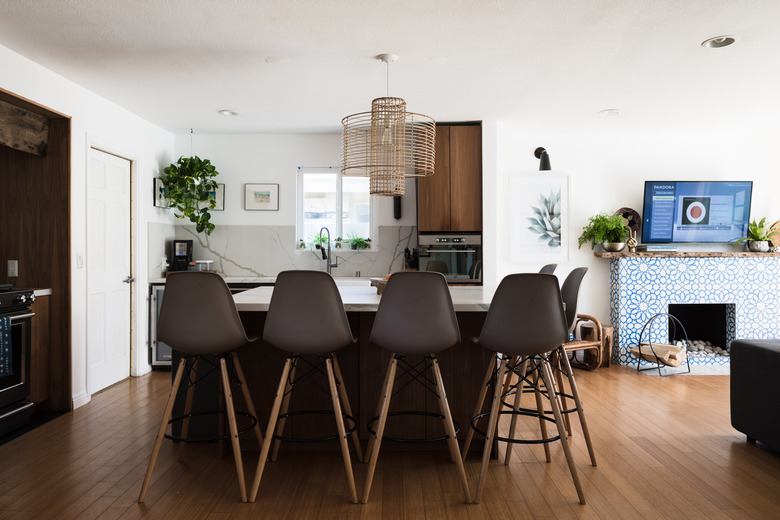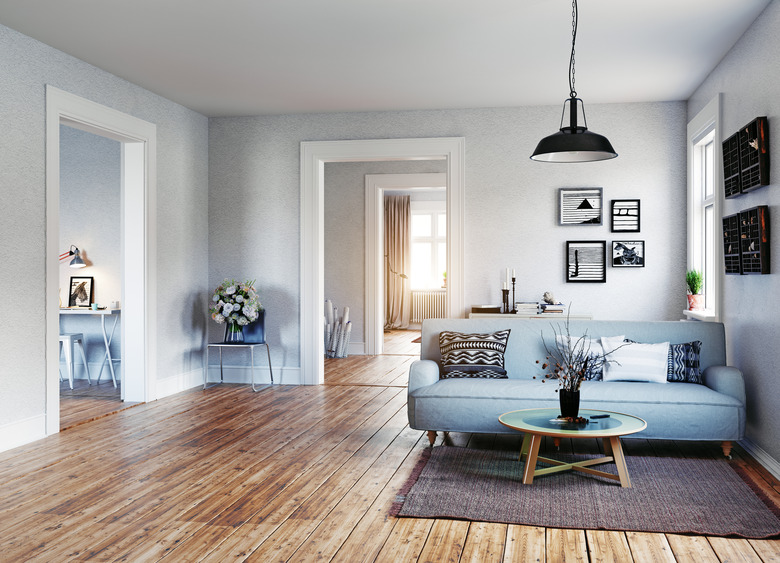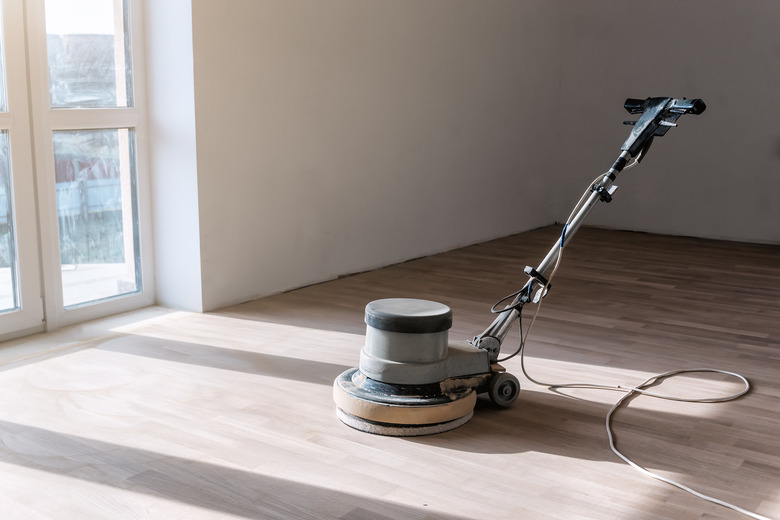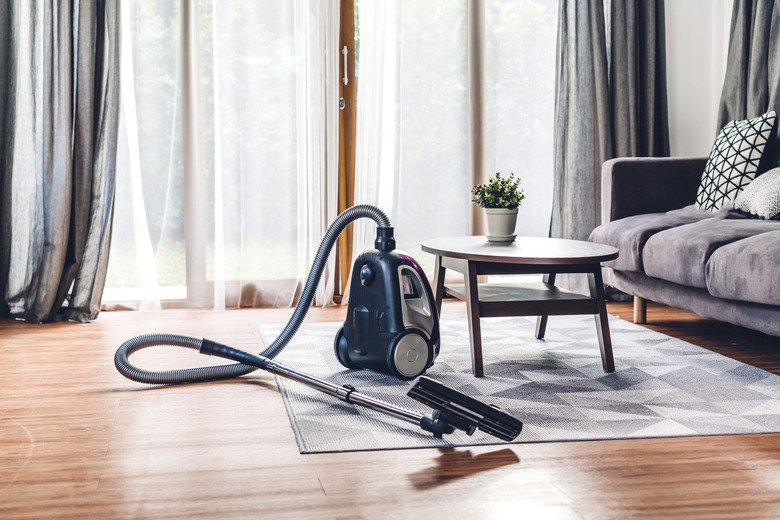Prefinished Vs. Unfinished Hardwood Floors
The choice between prefinished and unfinished hardwood flooring depends mainly on your priorities. If you like your finishes to be durable and you don't want to spend more than you have to spend for your floor installation, you'll naturally gravitate toward prefinished flooring. You'll be sacrificing flexibility, though, because unfinished flooring gives you the ability to stain the floor to match your decor and adjust the sheen to bring out the natural luxuriousness of your new flooring.
Another factor affecting your choice is the type of flooring you choose. Some types, such as bamboo, usually come prefinished, although you might find an unfinished product if you look hard enough. Engineered flooring is another product that almost always comes prefinished, and you may have to use it if the floor is below grade or in a damp area, such as a kitchen or utility space.
Solid wood flooring is generally available in prefinished and unfinished varieties. It's tempting to boil the choice down to one regarding how much of the extra work involved with sanding and refinishing your new floor you're willing to pay for or undertake, but there are issues of maintenance and overall aesthetics that you should consider.
Prefinished Hardwood Flooring: Pros and Cons
Prefinished Hardwood Flooring: Pros and Cons
When it comes to durability, you can't beat the factory finish that comes on most prefinished hardwood flooring. It consists of several layers of baked-on polyurethane followed by an aluminum-oxide coating, which is one of the hardest finishes there is. The advantages of such a durable finish are obvious, but a factory finish does also have some drawbacks:
- It often has a high gloss that makes it look like plastic, and it can be reflective enough to mask the wood grain in a well-lit location.
- It's scratch resistant but not scratchproof, and when a scratch does occur, it can be difficult to repair.
- It can be ultra slippery to the point that pets with long nails might have a hard time getting a footing.
- It's difficult to remove, so when the time comes for refinishing — and it will come — you'll find sanding difficult, and you may need to hire a pro. If so, there go the refinishing costs you saved by choosing prefinished flooring in the first place.
Prefinished flooring often costs more than unfinished flooring — about $2 per square foot more for the same wood species — but you generally save that by not having to sand and finish the floor during installation. However, one more characteristic of prefinished flooring can be a deal breaker, and that's the beveled edges. Prefinished boards tend to have bevels that create triangular troughs in the floor that trap dirt and may even be a different color than the main part of the floor.
Unfinished Hardwood Flooring: Pros and Cons
Unfinished Hardwood Flooring: Pros and Cons
If you choose unfinished flooring, you will have to sand it no matter what type of finish you decide to apply. Sanding is necessary to flatten the floor and cut down the raised edges, which can reach heights of 1/16 inch, and it's a messy process even if you use a dustless sanding system. Unless you've done it before, you should leave sanding to the installer — and that drives up the installation cost.
Other disadvantages of unfinished flooring include the following:
- Budget raw-wood flooring often includes warped boards that can be challenging to install. You may end up having to discard some of them. Offsetting this problem is the fact that unfinished flooring is more likely to be available in random lengths, which makes it easier to create a random stagger pattern.
- The room in which the floor is being installed is off limits during the finishing process, which can take days.
- Some finishes have a strong odor that lingers until the finish material has completely cured. You can avoid this by using a low-VOC coating, but if you want a finish that rivals the durability of prefinished floors, you'll need a noxious, solvent-based material that could drive you out of the house until it sets.
On the plus side, unfinished flooring gives you the flexibility to have a more natural-looking wood floor. The rich appearance and warmth that wood offers is probably one reason you chose it in the first place. Be as minimalist as you want or go the other way and apply several finish coats for maximum protection.
Don't Limit Yourself to Polyurethane
Don't Limit Yourself to Polyurethane
The number-one reason for choosing unfinished flooring is the control it gives you over color and finish quality. When it comes to prefinished flooring, what you see is what you get, but unfinished flooring is more like a blank slate awaiting your artistic input. Stain it to match the decor or leave the color natural.
When it comes to finishes, you can build up layers of water-based polyurethane, which will wear for 10 years or more and can be as high-gloss or as matte as you like, but that isn't your only option. You can also apply a penetrating oil, which is a subtle finish that preserves the natural wood texture but needs updating every few years. You can also apply shellac or, if you want a really traditional finish, a few coats of floor wax buffed to a stain sheen.
Perhaps one of the most exciting floor finishes to come along in a while is hardwax oil, a nontoxic, no-VOC product that, as Pete's Hardwood Floors advises, you can apply yourself with a paint pad. In their review of Rubio Monocoat, a leading product from Belgium that is available in the United States, Tadas Wood Flooring notes that only one coat is needed. Since the product contains a stain, it reduces the effort required for finishing, although unfortunately not for sanding.
Maintaining Prefinished and Site-Finished Flooring
Maintaining Prefinished and Site-Finished Flooring
In general, factory finishes and comparable coatings you apply by site finishing, such as polyurethane, take little maintenance. You should vacuum the entire floor frequently with a soft hardwood floor attachment, which is especially important if you have prefinished hardwood flooring because the bevels collect dirt quickly. Periodic maintenance should also include damp mopping with vinegar and water or with a commercial hardwood cleaner.
There's a big difference between prefinished and site-finished flooring when the finish gets damaged. You can't easily repair a scratched or water-damaged factory finish, and if the damage is noticeable, you may have to replace the affected boards. Site finishes are easier to repair, often by simply spot-patching with fresh finish.
If the floor has a hardwax oil finish, damage repair is even easier. You can sand out dents, scratches and even water stains and apply the same color oil over the raw wood. Because the finish penetrates only the exposed wood and not the finished wood, the repair is perfectly camouflaged, and it can be completed by almost anyone in just a few hours.



